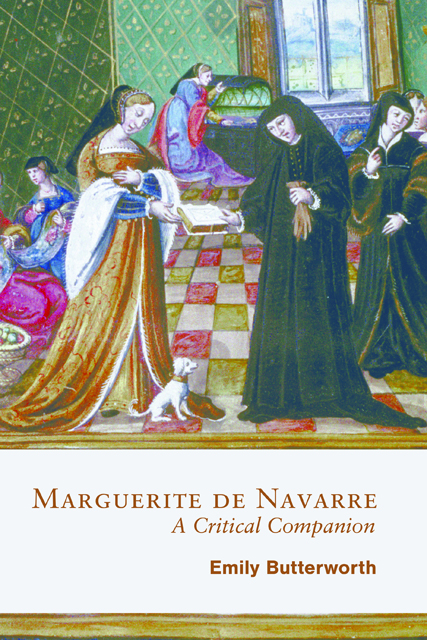Book contents
- Frontmatter
- Dedication
- Contents
- List of Illustrations
- Acknowledgements
- Note on Names and Editions
- Editions of Reference
- Introduction: A Brief Literary and Historical Chronology
- 1 Communities
- 2 Religion
- 3 Politics
- 4 Women and Men
- 5 Desire
- 6 Form and Technique
- Conclusion: Print and Public
- Bibliography
- Index
4 - Women and Men
Published online by Cambridge University Press: 20 December 2023
- Frontmatter
- Dedication
- Contents
- List of Illustrations
- Acknowledgements
- Note on Names and Editions
- Editions of Reference
- Introduction: A Brief Literary and Historical Chronology
- 1 Communities
- 2 Religion
- 3 Politics
- 4 Women and Men
- 5 Desire
- 6 Form and Technique
- Conclusion: Print and Public
- Bibliography
- Index
Summary
In structure and themes, the Heptameron seems deliberately designed to interrogate the social roles, expectations, and relationships of women and men. In comparison with Boccaccio’s Decameron, where seven women and three men tell the stories, Marguerite’s collection insists on gender equality, at least in numbers, suggesting that gender difference will be a primary concern. In the first section of this chapter, I will consider this polemical setting-up of gender in the Prologue. The storytellers’ allegiances do not always divide along gender lines, but they often do; and both women and men point out at various times the socially constructed nature of male and female honour, and the different demands these conceptions make on behaviour. The next two sections consider the models of masculinity and femininity assessed in the text. The Heptameron’s exploration of male and female nature and honour place it in the context of the long-running literary debate about the status of women known as the querelle des femmes, and a further section will consider Marguerite’s engagement with this debate, in particular the question of marriage that was a central part of it. The next section explores the literary model of courtly love and the Heptameron’s critique of it; and a final section returns to the question of the similarities and differences between the sexes. Marguerite’s own approach recognises the complexities of the relationships between women and men: multi-voiced, open-ended, and ultimately unresolved, the Heptameron encourages its readers to exercise their own judgement on the relationships it puts before us.
Equality in the Prologue
The Heptameron has elicited a large body of scholarship on how gendered communities are defined and delineated in the stories and the relationships between the storytellers. The Prologue both establishes and erases gender differences in the storytelling group. When they finally gather at the monastery in Sarrance after their ordeals and realise that they will have to wait at least ten days before they can leave, the group looks to Oisille, the oldest, and who, in Parlamente’s words, should act as a substitute mother for them all, for guidance on how to pass the time. It is the women who rally first to Parlamente’s request for entertainment, worried that they will sicken or become melancholic without it.
- Type
- Chapter
- Information
- Marguerite de NavarreA Critical Companion, pp. 103 - 131Publisher: Boydell & BrewerPrint publication year: 2022

